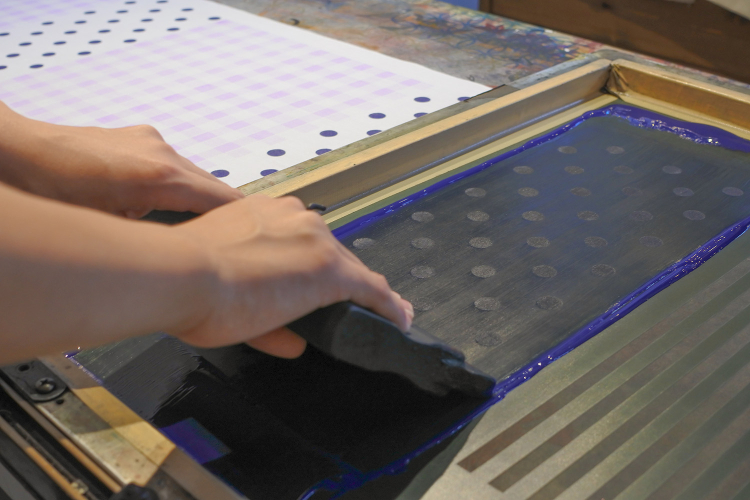ReservationSearch and reserve rooms
Click here to confirm, change or cancel your reservation
Shinkansen accommodation plan
提携法人専用予約
2024.11.06
Attracting people to Gujo. Original Tenugui experience "Takara Gallery workroom"

Gujo City in Gifu Prefecture is famous for the Gujo Odori dance. It is said that a dance tenugui is an essential item for the Gujo Odori dance.
Gujo Odori, which has a history of over 400 years, used to be danced with hand towels draped over the head. Bon Odori has the meaning of soothing the souls of the dead. By hiding the face and making it difficult to tell who the person is, it was believed that the ancestors and spirits who had returned to Bon were dancing together. On the other hand, it was also said to represent "disguise," and people who wanted to go dancing while hiding their identities would cover their faces with a hand towel and enjoy dancing to their heart's content, without any hesitation from anyone.
Today, most tenugui are dyed using the chusen-zome method, but even today, many are made using the local Gujo industry of silkscreen printing. Silkscreen printing is a printing technique that originated overseas and developed into an industry in Gujo after the war. It is used not only for cloth items such as tenugui and T-shirts, but also for industrial products such as signs and letters on remote controls, and it is said that it can print on anything except water and air.

The children's jinbei are printed with a design created in collaboration with Gujo Mokuri, a company that makes geta sandals for the Gujo Dance.
Silkscreen printing is a printing technique for mass production, so there are few places where tourists or people from outside the city can experience silkscreen printing, but at Takara Gallery Workroom you can experience silkscreen printing, and during the Gujo Dance season many people take part in the Gujo Dance with their own original tenugui towels.

A store that blends into the Gujo townscape
Maho Kamimura, the owner of Takara Gallery workroom, moved to Gujo when she got married. Wanting to do something using the design she learned as a student and her husband's family business of silkscreen printing, she launched Takara Gallery in 2009 as an online gallery that produces and sells "takaramono" (works) created by designers and artists using silkscreen printing. In 2012, she opened Takara Gallery workroom, where people can casually experience silkscreen printing.
Printing out memories here in Gujo

Your original design will be created based on the color, pattern, arrangement, and ink color of your choice.
The experience begins with choosing a tenugui in your favorite color. The final product will vary greatly depending on the combination of tenugui color and ink, and the pattern and arrangement. "Currently, you can choose from 23 ink colors. We change the patterns depending on the season. We've designed the tenugui so that even years from now, you can look at them and remember what season it was when you visited Gujo," says Uemura with a big smile.

Combine over 35 different patterns to freely design your own original design
Holes are made in the mesh screen to allow the ink to pass through, and the ink is then dropped evenly into the holes with a tool called a squeegee so that it is imprinted onto the tenugui underneath.

The ink is applied to the tenugui cloth.

Water-based ink changes color when it dries. In the top right, the water evaporates due to the heat of the hair dryer, causing the color to change.
The tenugui used in the experience at Takara Gallery workroom are available in 90cm and 100cm sizes. 90cm is the standard tenugui size, but 100cm is a size unique to Gujo Odori. The style of Gujo Odori is to wrap it around the neck so that it fits the collar of the yukata, and tuck the end of the tenugui into the obi. We hope that you will experience Gujo's local industry of "silkscreen printing" and then come back to Gujo Odori with the tenugui you made!
A place filled with people's treasures

The store's mascot dog Kohaku and the store owner, Mr. Uemura
Previously, the only experience available was making tenugui hand towels, but now you can also make t-shirts and tote bags.
It seems that there has been a change in the patterns that customers choose when trying out the experience. "In the past, I think that many people would choose a pattern related to Gujo Hachiman since they had made the effort to come to Gujo Hachiman, but recently, more people want to try out the experience in their favorite color as part of their favorite activity. Recently, a customer who likes baseball had the uniform number of his favorite player on it, and because it's an experience, you can make something that you like, and I feel that there are more options for what to make."
Gujo is a town where local industries and the passions of its visitors come together. New tenugui will continue to be born in this town as the times change, and Uemura will continue to be present at these times.
Takara Gall ery Workroom(Takara Gallery Workroom)
Address: 470-28 Shimatani, Yahata-cho, Gujo City, Gifu Prefecture, 501-4222
電話:0575-67-9707
Access: 3 minutes walk from the Mame Bus "Kyuchosha Kinenkan-mae" stop
HP: https://www.takara-garo.com/
SNS: https://www.instagram.com/takara_gallery_workroom/
*For details on business hours and holidays, please check the link above.




